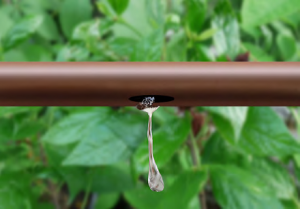As the days get shorter and cooler, greenhouse plants need less and less water. If you go on giving them as much water as in summertime, problems will build up.
Firstly, the plants may continue to grow soft young shoots that will be susceptible to frosts and disease, instead of slowing down their growth-rate and hardening up their stems for the winter.
Secondly, the dampness caused by all the watering will encourage the fungus growth that causes leaf moulds and root rots. This is made worse by the lack of sun to dry off plant and soil surfaces quickly after watering.
Thirdly, the excess water unused by the roots as it drains down through the soil dissolves essential plant nutrients out of the soil and carries them down beyond the roots’ reach. This process is called leaching (sometimes misspelled ‘leeching’, which is an entirely different thing).
Fourthly, you are wasting water.
What can you do? If you are using a watering computer set it to water less often, for example every fifth day instead of every third. The soil surface can dry off longer between waterings. You could also set it to run for a shorter time. Water in the early morning, so that leaves and soil can dry off before night, when humidity rises as the temperature falls. Instead of spraying with a hose use a can to apply water to the bases of plants without splashing their leaves and wetting the soil between them. Ventilate the greenhouse as often as you can.
Check pot plants by touching the compost surface with a dry finger: if it is damp enough it will feel cool and compost particles will stick to your fingertip. Give little or no water until next time.





